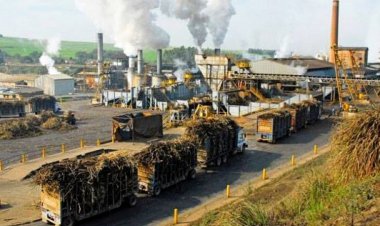A new report from the World Meteorological Organization (WMO) shows that records were once again broken, and in some cases smashed, for greenhouse gas levels, surface temperatures, ocean heat and acidification, sea level rise, Antarctic sea ice cover and glacier retreat.
Heatwaves, floods, droughts, wildfires and rapidly intensifying tropical cyclones caused misery and mayhem, upending every-day life for millions and inflicting many billions of dollars in economic losses, according to the WMO State of the Global Climate 2023 report.
The WMO report confirmed that 2023 was the warmest year on record, with the global average near-surface temperature at 1.45° Celsius (with a margin of uncertainty of ± 0.12°C) above the pre-industrial baseline. It was the warmest ten-year period on record.
Decreased monsoon rainfall in Southeast Asia is associated with El Niño. The onset of the monsoon over Kerala occurred on 8th June, 7 days later than normal.
By end of September, India had received 94% of its typical monsoon rainfall. However, higher than normal rainfall totals were observed along the lower course of the Indus River and in central India, the report said.
The report confirmed that 2023 was the warmest year in the 174-year observational record with the global average near-surface temperature at 1.45 degrees Celsius above the pre-industrial baseline (1850-1900).
"Sirens are blaring across all major indicators... Some records are not just chart-topping, they are chart-busting. And changes are speeding up," said United Nations Secretary-General Antonio Guterres.
"Never have we been so close albeit on a temporary basis at the moment to the 1.5 degrees Celsius lower limit of the Paris Agreement on climate change. The WMO community is sounding the red alert to the world... The climate crisis is the defining challenge that humanity faces," WMO Secretary-General Celeste Saulo said.
"Climate change is about much more than temperatures. What we witnessed in 2023, especially with the unprecedented ocean warmth, glacier retreat, and Antarctic Sea ice loss, is cause for particular concern," she added. COP28 President Sultan Al Jaber said the world has no time to spare.
To limit warming to 1.5 degrees Celsius, countries must deliver enhanced Nationally Determined Contributions (NDCs), economy-wide emissions reductions, and investments in nature and adaptation, he stressed.
Concentrations of the three main greenhouse gases carbon dioxide, methane, and nitrous oxide reached record-high observed levels, the report said.
Extreme weather and climate events had major socio-economic impacts on all inhabited continents, including major floods, tropical cyclones, extreme heat and drought, and associated wildfires, it said.
The WMO report also cited figures showing that the number of people who are acutely food insecure worldwide has more than doubled, from 149 million people before the COVID-19 pandemic to 333 million people in 2023 (in 78 monitored countries by the World Food Programme). WFP Global hunger levels remained unchanged from 2021 to 2022.
Protracted conflicts, economic downturns, and high food prices, further exacerbated by high costs of agricultural inputs driven by ongoing and widespread conflict around the world, are at the root of high global food insecurity levels, aggravated by the effects of climate and weather extremes.




 Join the RuralVoice whatsapp group
Join the RuralVoice whatsapp group









































